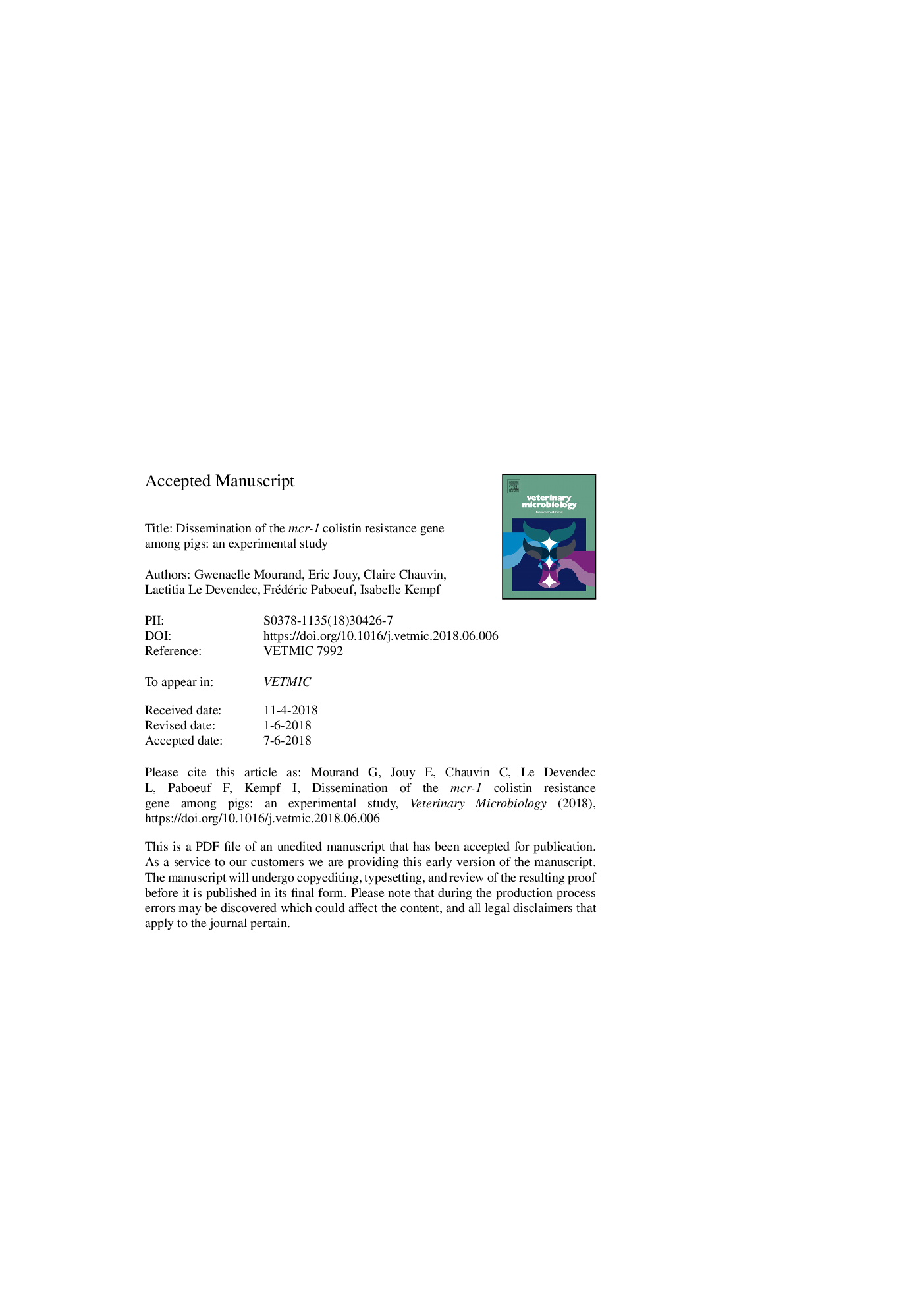| Article ID | Journal | Published Year | Pages | File Type |
|---|---|---|---|---|
| 8505235 | Veterinary Microbiology | 2018 | 24 Pages |
Abstract
Colistin resistance in Enterobacteriaceae is a public health problem. The present study was designed to evaluate the dissemination of a colistin-resistant Escherichia coli strain and its resistance gene, mcr-1, between orally inoculated pigs and their contacts. A non-inoculated control group, one low-dose and one high-dose group-both including two pens of two inoculated and three contact pigs-were raised in separate rooms. After inoculation of a colistin- and rifampicin-resistant E. coli suspension (2.5â¯Ãâ¯105 CFU/pig for the low-dose group and 2.5â¯Ãâ¯108 CFU/pig for the high-dose group), feces from inoculated and non-inoculated contact pigs were collected and inoculated on colistin- and rifampicin-supplemented media directly or after enrichment in rifampicin-supplemented media, then the isolates were characterized. PCR was used to detect the mcr-1 gene in lysates from feces cultivated in colistin-supplemented broth and DNA prepared from feces. Results showed that the low-dose inoculum was probably insufficient to obtain durable colonization, but could lead to the temporary presence of mcr-1-positive E. coli strains. The high-dose inoculum resulted in durable colonization of both inoculated and contact animals. In all groups, the mcr-1 gene was also detected in rifampicin-susceptible strains, suggesting its transfer to several commensal strains. A comparison of detection methods showed that more positive samples were obtained with cultures in rifampicin-supplemented media and suggests that current methods to evaluate the prevalence of colistin resistance in fecal samples suffer from poor sensitivity.
Related Topics
Life Sciences
Agricultural and Biological Sciences
Animal Science and Zoology
Authors
Gwenaelle Mourand, Eric Jouy, Claire Chauvin, Laetitia Le Devendec, Frédéric Paboeuf, Isabelle Kempf,
